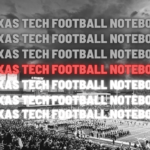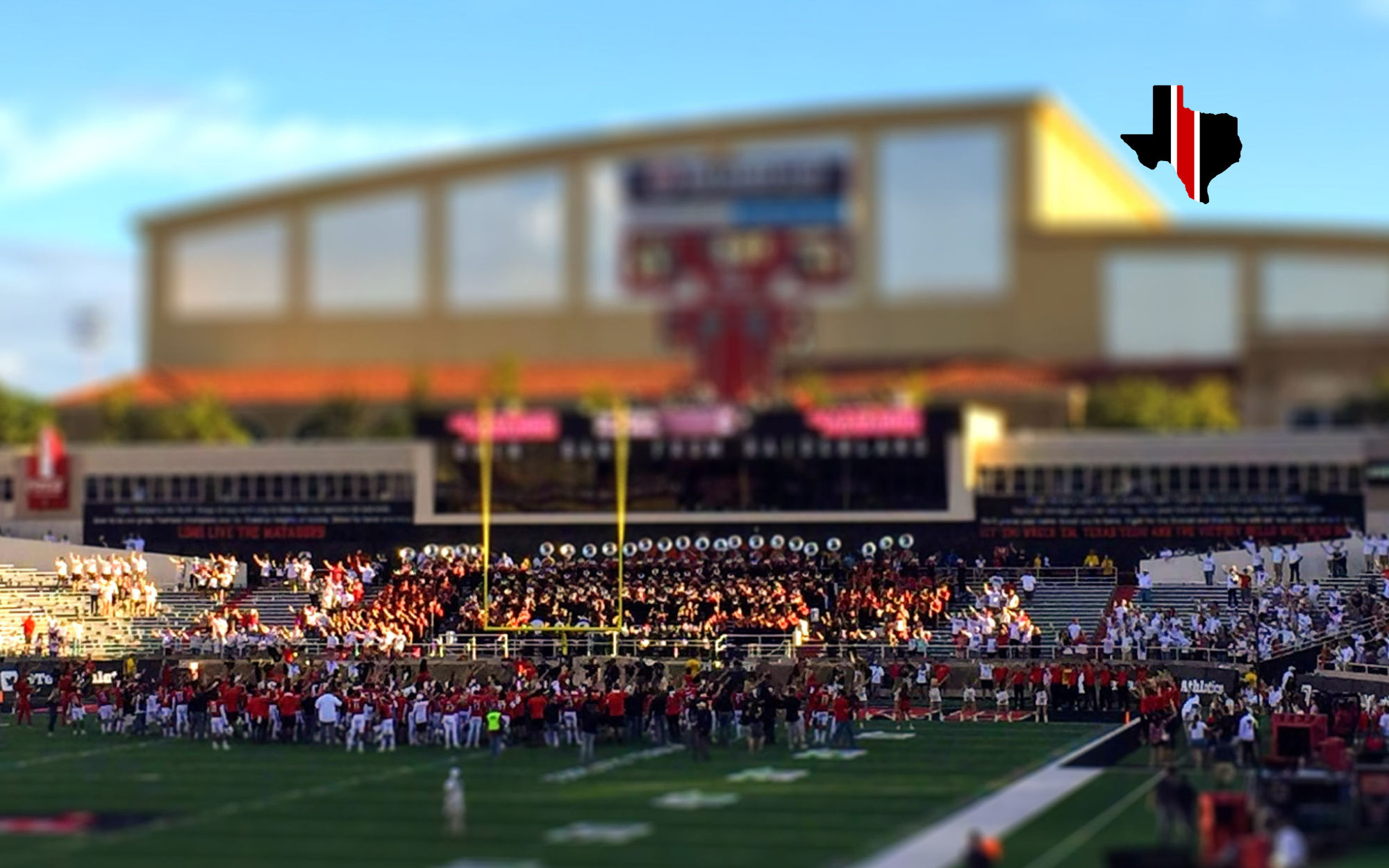Texas Tech’s new defensive coordinator Keith Patterson has been the defensive coordinator with Matt Wells for one year, prior to that, he was at Arizona State from 2014 through 2017 and then prior to that, Patterson was at West Virginia from 2012 through 2013.
Patterson essentially started out as a high school coach back in the late 80’s in Oklahoma before moving on to Allen High School near Dallas before jumping on with Tulsa for the time period that Todd Graham was there (and really before that as well), staying at Tulsa from 2003 through 2010 becoming the defensive coordinator from 2006 through 2010. Patterson then followed Graham to Pittsburgh for one year in 2011 and then started his work at West Virginia.
RELATED | Texas Tech Football: David Yost Balances Offense and Family
I’d be lying if I told you it’s a mixed bag because it is a mixed bag to some extent, some good and some bad. The numbers for last year are superb for Utah State, but the numbers for when Patterson was in charge at Arizona State are similar (and sometimes worse) from what’s been happening at Texas Tech.

The thing that I’ve been trying to wrap my head around is the one thing that I can somewhat pull out of these numbers, looking for the one thing where I can point to where Patterson has consistently done well and that’s a bit tricky. If you dig down to the individual Rushing S&P+, other than 2017, those are some decent numbers, and then you could say the same thing about the Passing S&P+ except for 2016.
I’d mention that Patterson is much better about forcing turnovers than David Gibbs was. In fact, Gibbs’ defenses were in the red for the last 3 of 4 years, while Patterson’s defenses were in the black the last 3 of 4 years. In a real world setting, Patterson’s defenses are definitely more aggressive. You’ll never ask why Patterson isn’t blitzing on third down because he’ll do that a lot, almost to a fault. Patterson loves pressure and I think that Patterson’s defenses can be a bit predictable because of his tendencies to pressure on third downs.
I am concerned about the rushing IsoPPP, which is big plays, essentially Patterson’s defenses do give up big rushing plays, except for last year for Utah State, and that could be a real problem in the Big 12, where it is more of a running league than people would like to admit.
I’d love for you all to see if you can pull something from those numbers that will correlate to success.
Patterson’s opening press conference is really pretty good. He says all of the right things (Patterson’s part starts around the 17:14 part). He talks about negative plays and having a mechanism to call defensive plays quickly to counter offenses that do the same thing. Patterson correctly notes that most big plays are the result of misalignment or miscommunication, so he tries to implement those things so that they are easy to teach.
Talking with Tony Gibson, trying to drink water out of a firehose, the thing that has been a process is the fact that we were a completely different style of defense 12 years ago, 12 but don’t break, stop the run, stay sound vertical in coverage, and here comes Gus Malzhan as our OC, I’ve worked on the opposite of Chad Morris, Dana Holgorsen, Mike Norvell, what I’ve tried to do is design a program and system to where we change how we measure success and change the style of play on defense, just can’t look at years given up, it’s incredible given up in a game, our goals was to play 65 plays or less a game, that’s a half now, we played 115 plays against Air Force. It’s not fun to play defense and now you’re chasing everyone, we’re aggressive, multiple up front, multiple coverage wise because you get shots on goal, we have what’s called a blueprint, we like to take the ball away from our opponent, we led the country in interceptions, 2010 led the country in interceptions, in Pittsburgh it was tackles for loss, try to create negative yardage plays, we were averaging 6 and three-and-outs per game, we were #2 or #3 in turnovers, also 4th down stops, did that 16 different times, try to come up with a system of forcing negative plays, taking the ball away from our opponent and getting off the field on 3rd down, we put a major emphasis on yards per play, eliminate yards per play, longest play was 20 yards given up against Michigan State, big plays come from a misalignment or a miscommunication, finally is red zone scoring defense, try to force field goals and force missed opportunities . . . I think I have great respect for the coaches here before me, they’ve done a nice job of playing that style, I haven’t seen them play a great deal, saw the Texas game last year, and Oklahoma game this year, turnovers were critical, your defense has to compliment our offense, we have to get the ball back to our offense as fast as possible, you can’t be a bend, but don’t break, be aggressive, keep opponents off and being calculated in attacking their run schemes and protections, it turns into a chess match, you have to give an uptempo offense on the field to give them rhythm, that’s been an adjustment for me as a coach as quickly with an uptempo offense, I like where we are, I think we have great cohesiveness, Dave Yost and I do . . . One of the first things we talk about with our players, we are very multiple on the front end and back end, we are multiple with minimal teaching, it has to tie together, it is critical when you are that multiple, players have to be students of the game, they have to spend time studying the scheme, to me it’s not complicated, but I’m not playing, we have a unique way to communicate with players from the sideline, just call defense fast, we have a mechanism to call defense fast, where you see a lot of misalignments that’s where you get people caught off guard, as long as you have a system in place to call defense fast, being able to go against those guys has helped . . . it varies where I am, I don’t like to plug a circle into a square hole, I have to evaluate the kids here, I think they have been very similar to what we’ve done, sometimes it looks like a 3-4, a 3-3-5, this past season, I moved 3 guys to the spur position, he’s about 60% DB and 40% linebacker, that particular position has more DB skills, our boundary linebacker position, possesses more of a defensive end or pass rush up front type compared to about 40% defensive line so they are different even though they are both outside backer positions, it is still 3 down lineman, 3 linebackers, and and kind of a hybrid and 4 DB’s, the spur, look at Damarious Randle, he was a safety, but also had corner skill guy, at West Virginia, Terrence Garmon was 6-5/225 pounds, we’re a multiple odd front formation defending package is who we are . . . it is really a lot of things, #1 the type of man coach he, he allows me to do what I love to do, that’s defense, I wasn’t going to tie myself to anyone, when I left Arizona State, I left for someone that I know and trust, more true now than ever before, my father was a high school coach in Oklahoma, my father was born in Detroit, Texas, very familiar with Texas being a former coach here in Texas, and my wife, all of the other jobs, she kept saying “How about Texas Tech” it just worked out, I have close friends here in Lubbock, that went to school here and never left, I don’t know if I’ve ever had anyone say anything negative about Texas Tech, I only grew up 3 hours and 45 minutes down the road in Marlow Oklahoma , I’ve always said that people in West Texas are some of the friendliest people on the planet, we have to make these decisions so fast, I’m scheduled to pick coach up from the airport, got a call, hang on, saw my mother-in-law and now here I am . . . it wasn’t a good memory, I think West Virginia was ranked 5th, we had just beat Texas the week before, it was for the Red Raiders, we came back with Arizona State in ’16, I think they blocked a punt right before halftime, it is a tough place to play, just being on the other sideline, the fans are great fans, they understand football, even though we came up short, it was very impressive watching the fans . . . I think obviously have to get people in key positions, the thing I see about Texas Tech recruiting spread out in key areas, it is such a football rich tradition state, I think first and foremost you build relationships with Texas high schools and coaches, I believe that recruiting is relationship drive and players sign with a coach, it is a people business, even though they love the university, watching that practice or watching games and sitting on that sofa and telling them how they fit into a system, I think get as many people on high school campuses as you can, just out-work people, out-hustle, get out there and roll your sleeves up and sell a lot of great things about this program . . .










